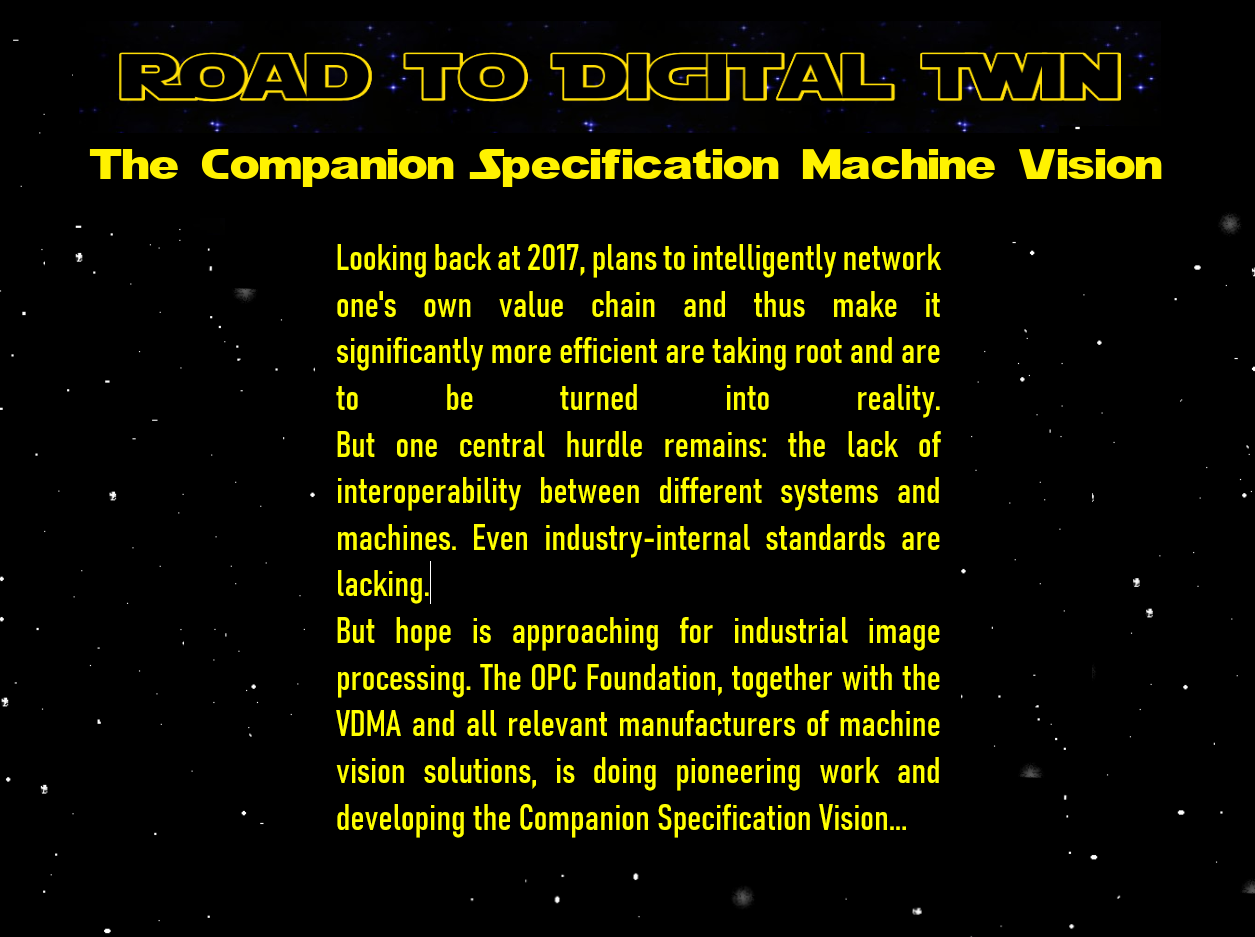
Prologue
“Industry 4.0”, no other term has shaped mechanical and plant engineering more in the last decade. The term describes the intelligent networking of machines and processes with the help of information and communication technology. Put more simply: machines and systems must (be able to) speak the same language.
The open interface OPC UA established itself early on as the communication standard in this fourth “industrial revolution”. The basis for the creation of Companion Specifications was thus created. These are initially industry-specific information models that make interoperability of machines, plants and systems possible on a semantic level.
The Companion Specification Machine Vision – a significant milestone for image processing
“Early implementation instead of wild theorising”
At a time when much was still stuck in the mire of theory, ASENTICS’ focus has always been on an application-oriented objective that provides enough traction as a driver to turn ideas into reality in a timely manner. Thus, the cooperation of ASENTICS with the VDMA, the OPC Foundation and many other players in the machine vision industry also benefited from our ideological claim. The result is the design and implementation of the first information model in the field of automation: The Companion Specification Machine Vision Part 1.
The Companion Specification Machine Vision Part 1 enables the generalised control of a machine vision system and abstracts the necessary behaviour via a state model (state machine). The basic assumption of the model is that a vision system in a production environment goes through a sequence of states that are of interest to and can be influenced by the environment. In addition to the information collected by the image acquisition and transmitted to the environment, the vision system receives relevant information from said environment. Due to the diversity of machine vision systems and their applications, other methods (e.g. Recipe Management) and manufacturer-specific extensions are necessary in addition to the State Machine Model to manage this information flow. The Companion Specification Machine Vision is therefore an industry-wide standard that still allows freedom for changes or individual additions.
Everyone benefits – no ifs or buts
Through the acquired standard, our vision systems gain a gigantic potential in terms of connectivity with their periphery. But what are the explicit advantages and possibilities?
Companion Specification Machine Vision Part 2 already in progress
While the Companion Specification Machine Vision Part 1 focuses on the standardised integration of machine vision systems into automated production systems, the future Part 2 will use the agreed basis for the structural description of the system and the addressing of its components. The focus will be on asset management and condition monitoring of these components.
Looking at the big picture – Companion Specifications mark the start where everyone can get involved themselves!
Image processing is no longer the only industry with an established standard. The number of companies and industries participating in the development and creation is consistently increasing, and so is the amount of available information models. They form the foundation walls for the next higher goal: the digital twin.
Contrary to the Companion Specifications, the digital twin looks at the interoperable networking of machines and processes more from an application-oriented top-down perspective, for example by merging information models from different industries.
ASENTICS is also significantly involved in this development process and is a member of the Industrial Digital Twin Association.
More information about the digital twin, which possibilities arise for our image processing systems and how you as a customer ultimately benefit. All in the next articles of our series “Road to Digital Twin”.



